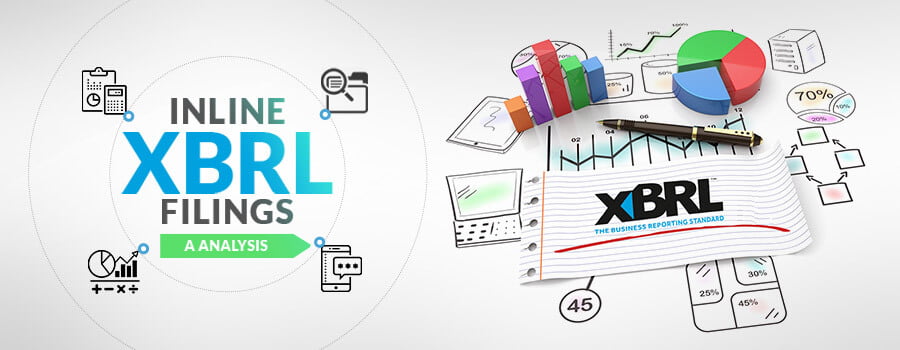Inline XBRL filings
Inline eXtensible Business Reporting Language is almost like PDF. It is a computer comprehensible and browser accessible properly formatted HTML document having XBRL data embedded beneath it. Inline XBRL in fact conceals technical verbiage associated with its and avails a document completely resembling source file prior to. Underlying are some of the vital details regarding iXBRL for SEC filing.
It was on June 13th of 2016 that SEC intimated US listed companies about the provision to file their financial statements (quarterly and annual) in Inline XBRL. Years ago in 2009, SEC made this filing mandatory owing to its accountability and transparency in reporting. But still companies were filing quarterly reports and annual report in two formats- Extensible Business Reporting Language and Electronic Data Gathering, Analysis, and Retrieval system (EDGAR)-compliant HTML for processing and viewing respectively. SEC has now demanded replacement of this dual filling requirement by one capable of serving both the purposes. iXBRL voluntary SEC filing is appreciated for submissions.
All forms which cover data related to financial statement and those which were earlier included in this submission mandate can be filed. SEC order has affected just the file format through which it is accepting submissions. Rules as well as tagging scope remains unchanged with the sole difference that instead of this document, inline XBRL filings have to be done.
Company extensions should be filed with inline eXtensible Business Reporting Language document. Though, it is expected that extension numbers would gradually decrease. The document renders financial statements according to source HTML and therefore extensions needed for matching XBR Language and HTML outputs are now mot needed.
With the arrival of iXBRL, you have to file just one report with the taxonomy extended by the company. No impact would be there if this compliant platform was already being used. For Inline tagging, no change in information or taxonomy that needs tagging is required. But software may be needed for extracting XBR Language data from the files.
For the purpose of creating inline documents for reporting, the syntax of document should be in compliance to the Inline XBR Language 1.1 specification. Also EDGAR Filing Manual has in it some rules to create HTML, using HTML tags, attributes and attachment types etc. The said requirements and technical syntax should be abided by. Documents in inline XBRL format can be viewed from any browser but to view facts tagged and their corresponding properties, you need specialized software.
It is not mandatory to submit this report as of now but there are chances that SEC may make it mandatory. If you embrace it earlier, definitely more benefits can be enjoyed and the efforts taken in xbrl document creation process would be worthier.
Inline XBRL report serves as a combined report with both extensible business reporting language tagging and HTML rendering thus eliminating the necessity for creating, reviewing and maintaining separate documents and managing complicated version controls.
To know more about XBRL document conversion and different XBRL conversion services, you may reach us and have a detailed discussion.




